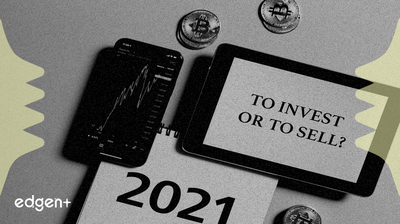Features
Trading Strategies
Resources
Ask AI About XRP

No Data Yet

## Yönetici Özeti **Schwab Varlık Yönetimi** tarafından yapılan yakın tarihli bir anket, **Borsa Yatırım Fonu (ETF)** yatırımcılarının %45'inin kripto ETF'lerine sermaye ayırmayı planladığını göstermektedir; bu rakam, tahvil ETF'lerine duyulan ilgiyle eşleşmektedir. Bu bulgu, geleneksel varlık sınıflarına kıyasla kripto ETF piyasasının başlangıç aşamasında olmasına rağmen, dijital varlık yatırım araçlarının ana akım tarafından benimsenmesine doğru kayda değer bir geçişin sinyalini vermektedir. ## Etkinliğin Detayları **Schwab Varlık Yönetimi** tarafından 6 Kasım 2025 Perşembe günü yayınlanan "ETF'ler ve Ötesi" raporu, ETF yatırımcılarının neredeyse yarısının kripto ETF'lerine yatırım yapmayı düşündüğünü ortaya koydu. Özellikle, katılımcıların %45'i kripto ETF'lerine yatırım yapma planlarını dile getirerek, planlanan yatırım ilgisi açısından **ABD tahvilleri** ile eş düzeyde yer aldı. Karşılaştırma yapmak gerekirse, katılımcıların %52'si **ABD hisse senetlerine** yatırım yapmayı planlıyordu. Bloomberg'in kıdemli ETF analisti **Eric Balchunas**, bu bulgular hakkında yorum yaparak, kripto ve tahvil piyasalarının göreceli boyutları göz önüne alındığında sonuçları "şok edici" olarak nitelendirdi. Balchunas, kriptonun şu anda toplam ETF **Yönetilen Varlıklar (AUM)**'unun yaklaşık %1'ini oluşturduğunu, tahvillerin ise toplam ETF AUM'unun %17'sini oluşturduğunu belirterek, kripto ETF'lerinin "ağırlığının çok üzerinde performans gösterdiğini" öne sürdü. Schwab anketi, her biri en az 25.000 dolarlık yatırım yapılabilir varlığa sahip, 25 ila 75 yaş arasındaki 2.000 bireysel yatırımcıyı kapsadı. Katılımcıların yarısı son iki yılda aktif olarak ETF ticareti yapmıştı. Anket ayrıca, **Millennial** yatırımcıların (1981-1996 doğumlu) kripto ETF yatırımına en yüksek eğilimi gösterdiği ilgi alanında demografik bir eşitsizliği vurguladı. Millennial'ların yaklaşık %57'si ETF'ler aracılığıyla kriptoya yatırım yapmayı planladığını belirtirken, **X Kuşağı** (1965-1980 doğumlu) için bu oran %41 ve **Baby Boomer'lar** (1946-1964 doğumlu) için %15 idi. ## Piyasa Çıkarımları Bu güçlü yatırımcı ilgisi, kripto ETF'lerine artan sermaye akışı potansiyelini düşündürmektedir; bu da dijital varlıkları geleneksel bir yatırım sınıfı olarak daha da meşrulaştırabilir. Kripto ETF'lerinin 2025'teki genişlemesi, gelişen düzenleyici çerçeveler ve sürekli yatırımcı talebiyle desteklenmiştir. **ABD Menkul Kıymetler ve Borsa Komisyonu (SEC)**, Eylül 2025'te yeni kurallar uygulayarak kripto ETF onaylarını 75 güne indirdi. Bu düzenleyici ayarlamalar, **XRP** ve **SOL** gibi varlıkları içerebilecek çoklu coin ETF'lerinin onayını kolaylaştırarak pazar çeşitlendirmesini hızlandırmaktadır. Analistler, yalnızca **Bitcoin ETF'lerine** kurumsal varlıkların %2-5'lik bir tahsisinin 45 milyar doların üzerinde pazar büyümesiyle sonuçlanabileceğini öngörmektedir. Daha geniş kripto piyasası da önemli bir genişleme yaşadı. 2025'te toplam kripto piyasası değeri 4 trilyon dolar eşiğini aştı. Eş zamanlı olarak, kripto mobil cüzdan kullanıcı sayısı rekor seviyelere ulaşarak yıldan yıla %20 arttı. Aylık ayarlanmış stablecoin işlem hacmi Eylül 2025'te 1.25 trilyon dolara yaklaştı ve toplam stablecoin arzı 300 milyar doları aştı; bu pazar **Tether (USDT)** ve **USDC** tarafından domine edilmekte olup, ikisi birlikte arzın %87'sini oluşturmaktadır. Tokenlaştırılmış **Gerçek Dünya Varlıkları (RWA)** piyasası 30 milyar dolara ulaşarak son iki yılda neredeyse dört katına çıktı. **iShares Bitcoin Trust (IBIT)** güçlü bir performans sergileyerek yılbaşından bugüne %28.1 getiri sağladı ve CFRA bunu düzenleme odaklı benimsemenin ana faydalanıcısı olarak tanımladı. ## Uzman Yorumu Bloomberg'in kıdemli ETF analisti **Eric Balchunas**, kripto ETF'lerine olan orantısız ilgiyi pazar varlıklarına göre vurguladı: "İnsanların yatırım yapmayı planladığı alanlarda kriptonun tahvillerle ikinci sırada yer aldığını görmek de şok ediciydi. Kripto, toplam ETF AUM'unun %1'i iken tahviller %17 olduğu göz önüne alındığında, ağırlığının çok üzerinde performans gösteriyor." Schwab Varlık Yönetimi genel müdürü **David Botset**, daha geniş sektör dönüşümünü vurgulayarak, "bireysel yatırımcılar yeni varlık sınıflarına, yatırım stratejilerine ve araçlarına erişim sağladıkça yatırım dünyası hızlı bir dönüşüm geçirmektedir" dedi. ## Daha Geniş Bağlam Kripto ETF'leri de dahil olmak üzere ETF'lerin artan benimsenmesinin arkasındaki birincil itici güçler düşük maliyetler ve erişilebilirliktir. Anket, katılımcıların %94'ünün ETF'lerin yatırım portföylerindeki maliyet azaltımına katkıda bulunduğuna inandığını gösterdi. Ek olarak, ankete katılan yatırımcıların yaklaşık yarısı, ETF'lerin kendi uzun vadeli varlıklarından farklı niş veya hedeflenen stratejilere yatırım yapmalarını sağladığına ve çeşitli varlık sınıflarına erişim sağladığına kesinlikle katıldı. Bu eğilim, dijital varlık alanına kadar uzanan, çeşitlendirilmiş ve erişilebilir yatırım ürünlerine yönelik daha geniş bir yatırımcı iştahını vurgulamaktadır.

## Yönetici Özeti Bitcoin, 105.000 dolarlık önemli bir satış duvarıyla karşı karşıya, bu da fiyatının toparlanmasını engelliyor. Kripto para piyasası, yaklaşan ABD Yüksek Mahkemesi'nin ticaret tarifeleri konusundaki kararına ilişkin geniş belirsizlikler arasında 100.000 doların üzerinde istikrar kazanıyor. ## Olay Ayrıntıları **Bitcoin**, **105.000 dolar**ın üzerinde önemli bir direnişle karşılaşıyor; bu, büyük bir teklif pozisyonları kümesi veya satış emirleri ile karakterize ediliyor. Kripto tüccarı **Skew**, bu satış emirleri yoğunluğunun fiyatı "sınırladığını" ve artan satış baskısını gösterdiğini belirtti. Material Indicators, bu önemli satış emirlerinin Bitcoin fiyatını **93.000** ila **98.000 dolar** aralığına bastırmak için tasarlanmış olabileceğini öne sürüyor. Tersine, Bitcoin **105.000 dolar** seviyesine ulaşırsa, bu satış emirlerinin bazıları geri çekilebilir. Eş zamanlı olarak, ABD Yüksek Mahkemesi, eski Başkan **Donald Trump** tarafından Uluslararası Acil Ekonomik Yetkiler Yasası (**IEEPA**) kapsamında uygulanan tarifelerin yasallığını inceliyor. İşletmeler ve eyaletlerin itirazlarından kaynaklanan bu inceleme, Çin, Meksika ve Kanada dahil olmak üzere ülkelerden gelen mallar üzerindeki yaklaşık **90 milyar dolar**lık ithalat vergileriyle ilgilidir. Davacılar lehine bir karar, toplanan vergilerin iadesine yol açabilir ve finansal piyasalara oynaklık enjekte edebilir. ## Piyasa Etkileri **105.000 dolar**lık satış duvarının varlığı, **Bitcoin** için potansiyel bir aşağı yönlü baskı öneriyor. Analistler, **108.900 dolar**lık kısa vadeli yatırımcı gerçekleşmiş fiyatına yakın bir "kritik destek" belirliyor. Bu seviyenin altına bir ihlal, **93.000** ila **95.000 dolar** aralığına doğru daha derin bir geri çekilmeyi tetikleyebilir. **XRP**, **Solana** ve **Ethereum**'un günlük kazançlar kaydetmesine rağmen, yakın zamanda **100.000 dolar**ın üzerinde istikrara rağmen, **Korku ve Açgözlülük Endeksi** **27**'ye gerileyerek piyasa temkinliliğini gösterdi. Glassnode analistleri, "tüccarlar hala hedge ediyor, düşüşte almıyor" diyerek zayıf talep ve yüksek temkinlilikle "kırılgan bir dengeyi" vurguladılar. Sürdürülebilir bir toparlanma, yenilenen girişlere ve **Bitcoin**'in **112.000** ila **113.000 dolar** bölgesini destek olarak yeniden kazanmasına bağlıdır. Tarihsel olarak, **Donald Trump** tarafından Çin ithalatına uygulanan önceki **%100 tarife** gibi ticaret gerilimleri, **Bitcoin** için **%8**'lik bir düşüşle **111.000 dolar**a ve **Ethereum** için **%15**'lik bir düşüşle **3.800 dolar**ın altına gerileme dahil olmak üzere önemli kripto para fiyat düşüşleriyle ilişkilendirilmiştir. ## Daha Geniş Bağlam Yüksek Mahkeme'nin tarifeler hakkındaki kararı, şirket bilançoları ve yatırımcı duyarlılığı üzerinde daha geniş etkileri olabilir. Önceki tarife duyuruları, hem geleneksel hisse senetleri hem de dijital varlık piyasalarında önemli piyasa oynaklığına neden olma potansiyelini göstermiştir. Örneğin, **Bitcoin** hazine stratejisiyle bilinen bir şirket olan **MicroStrategy (MSTR)**, **Bitcoin** fiyat hareketleriyle bağlantılı daha geniş bir piyasa düzeltme döneminde hisse senedinin **%3.2** düşüşle Temmuz zirvelerinin **%30** altında işlem gördüğünü gördü. Tarife kararının sonucu, ticaret politikasını yeniden şekillendirme potansiyeli ve küresel ekonomik istikrar ile varlık değerlemeleri üzerindeki sonraki etkileri açısından yakından izlenecektir.

## Executive Summary Ripple Labs **500 milyon dolarlık** bir finansman turunu tamamladı, Metaplanet **100 milyon dolarlık** Bitcoin destekli bir kredi sağladı ve **HyperLiquid** önemli tasfiyeler yaşayarak kripto para piyasasındaki dinamik değişimleri vurguladı. ## The Event in Detail **Ripple'ın Stratejik Sermaye Enjeksiyonu** Kripto ödeme girişimi **Ripple**, **500 milyon dolarlık** bir finansman turunu tamamladığını ve değerlemesini **40 milyar dolara** çıkardığını duyurdu. Yatırım, **Fortress Investment Group** ve **Citadel Securities** iştirakleri tarafından yönetilen fonlar tarafından öncülük edildi ve **Pantera Capital**, **Galaxy Digital**, **Brevan Howard** ve **Marshall Wace**'in katılımıyla gerçekleşti. Bu sermaye enjeksiyonu, Ripple'ın 2012'deki kuruluşundan bu yana toplam finansmanını yaklaşık **800 milyon dolara** çıkardı. Şirket, küresel genişlemeyi hızlandırmayı, saklama, stabilcoinler ve ana aracılık gibi alanlarda ürün geliştirmeyi artırmayı ve stratejik satın almalar yapmayı hedefliyor, bu da kripto endüstrisinde büyük bir finansal hizmet sağlayıcısı olma vizyonuyla uyumlu. Ripple'ın **RLUSD** stabilcoini, ilk yılında şimdiden **1 milyar doların** üzerinde piyasa değerine ulaşarak kurumsal blockchain büyümesini destekliyor. **Metaplanet'in Bitcoin Destekli Hazine Genişlemesi** Tokyo borsasında işlem gören bir Bitcoin hazine şirketi olan **Metaplanet**, Ekim ayı sonlarında kurulan **500 milyon dolarlık** kredi tesisinden **100 milyon dolarlık** Bitcoin destekli bir kredi sağladı. Bu finansal manevra, mevcut Bitcoin (BTC) varlıklarını kısa vadeli finansman için teminat olarak kullanıyor. Fonlar, **Bitcoin** hazinesini genişletmek ve **75 milyar yen** (yaklaşık **500 milyon dolar**) değerinde bir hisse geri alım programı yürütmek için ayrıldı. Metaplanet, Ekim ayı itibarıyla yaklaşık **3,5 milyar dolar** değerinde önemli miktarda **30.823 BTC**'ye sahip olduğunu bildirdi. Şirket, **100 milyon dolarlık** kredi için Bitcoin varlıklarının yalnızca **%3**'ünü teminat olarak kullanarak muhafazakar bir kredi-değer oranını sürdürdü. Bu strateji, Metaplanet'in 2027 yılına kadar **BTC** varlıklarını **210.000 BTC**'ye çıkarmaya yönelik daha geniş hedeflerinin bir parçasıdır ve yatırımcılar için hisse başına Bitcoin maruziyetini artırmayı amaçlamaktadır. **Solana Şirketi'nin Hisse Geri Alım Programı** **Solana Şirketi (HSDT)**, **Nasdaq**'ta işlem gören adi hisseleri için **100 milyon dolarlık** bir hisse geri alım planını onayladı. Bu açık uçlu geri alım programı, şirketin açık piyasada ve müzakere edilmiş işlemler yoluyla hisse senedi satın almasına olanak tanıyor. Bu girişim, net varlık değeri (NAV) indirimlerini daraltmayı, hisse fiyatlarını desteklemeyi ve yatırımcılar için hisse başına **SOL** birikimini en üst düzeye çıkarmayı amaçlıyor. Şirketin hisseleri **4,79 dolar**dan işlem görüyordu ve geçtiğimiz ay **%70**'ten fazla düşüş yaşamıştı. Bu eylem, önemli dijital varlık hazinelerine sahip şirketler arasında, bu varlıkları kurumsal finans stratejileri için kullanma eğiliminin artmasıyla uyumludur. **HyperLiquid'in Büyük Tasfiyeleri** **HyperLiquid** borsası, 24 saatlik bir dönemde **10 milyar dolarlık** tasfiyelere yol açan önemli piyasa oynaklığına tanık oldu. Platformdaki altı yüksek kaldıraçlı sözleşme balinası, kişi başına ortalama **40 milyon doları** aşan önemli kayıplar yaşadı. Dikkat çekici örnekler arasında, zirve karı **87 milyon dolara** ulaştıktan sonra **21,77 milyon dolar** ana para kaybeden James Wynn ve zirve karı **26 milyon dolara** ulaştıktan sonra **3 milyon dolar** ana para kaybeden "İçeriden Balina" yer alıyor. Bir diğer tüccar olan AguilaTrades, **37,62 milyon dolar** ana para kullandı ve **41,7 milyon dolar** zirve karı elde etti. "Rolling Long Whale" ise **125.000 dolar** ana parayla **344 kat** getiri sağlayarak **43 milyon dolar** zirve karına ulaştı, ancak piyasa tersine dönmesi nedeniyle tasfiye oldu. Bu olay, yüksek kaldıraç, düşük likidite, panik satışı ve önemli slippage gibi faktörlerle daha da kötüleşti; buna, **1 milyon dolarlık** işlemlerde **%5**'in üzerinde slippage ile Bitcoin fiyatlarının **110.000 dolara** düşmesi de dahildi. Toplamda **11,6 milyon**dan fazla tüccar tasfiye edildi ve **19 milyar dolarlık** pozisyon kaybedildi. **Monad'ın Beklenen Ana Ağ Lansmanı** **Monad**, 24 Kasım'da TSİ 17:00'de (ET 9 a.m.) Katman 1 blok zincirini ve yerel tokenini başlatmayı planlıyor. 2022'de kurulan Monad, ölçeklenebilirlik sınırlamalarını gidermek için tasarlanmış EVM uyumlu bir ağ geliştirmek üzere **225 milyon dolar** topladı. İyimser paralel yürütme ve özel bir Bizans Hata Toleransı konsensüs mekanizması kullanarak **saniyede 10.000 işleme (TPS)** kadar verim ve saniye altı kesinlik hedefliyor. Halka açık ağın lansmanı ve ilişkili topluluk airdrop'u, kripto ekosisteminde merakla beklenen olaylardır. **Diğer Piyasa Gelişmeleri** Stabilcoin kamu zinciri **Stable**, 6 Kasım'da ikinci ön depozito kampanyasını duyurdu ve ağında yeni USDT'ye dönüştürülmek üzere **500 milyon dolara** kadar USDC depozitosu kabul etti. **Intuition**, **TRUST** token airdrop'u için taleplerin artık açık olduğunu doğruladı. Ayrıca, "MEET48Best7" Web3 oylama etkinliği devam ediyor ve **Luxxcoin** için yaklaşan Token Üretim Etkinliği (TGE) 24 Kasım 2025'te ve **Mutuum Finance** için V1 lansmanı 2025'in 4. çeyreğinde planlanıyor. ## Piyasa Etkileri Son faaliyetler, ikiye ayrılmış bir piyasa ortamını vurgulamaktadır: güçlü kurumsal ve şirket katılımı, önemli perakende ticaret riskleriyle tezat oluşturmaktadır. **Ripple**'ın önemli finansmanı ve iddialı genişleme planları, temel teknolojiye olan kurumsal güveni ve geniş finansal entegrasyon potansiyelini vurgulamaktadır. Benzer şekilde, **Metaplanet**'in ve **Solana Şirketi**'nin dijital varlık hazinelerini bilanço yönetimi ve hissedar değeri yaratma amacıyla stratejik olarak kullanması, kurumsal Bitcoin hazine yönetimindeki emsalleri yansıtan olgunlaşan bir kurumsal finans trendini göstermektedir; şirketler **BTC**'yi stratejik bir rezerv varlığı ve hisse geri alımları gibi sermaye tahsisi stratejileri için kullanmaktadır. Buna karşılık, **HyperLiquid**'deki yaygın tasfiyeler, kripto para piyasalarında yüksek kaldıraçlı ticaretle ilişkili doğal oynaklık ve risklerin acı bir hatırlatıcısıdır. Bu tür olaylar daha geniş piyasa düzeltmelerini tetikleyebilir ve özellikle önemli kaldıraç kullanan yatırımcılar için yatırımcı duyarlılığını etkileyebilir. **Monad**'ın ana ağının yakında piyasaya sürülmesi, Katman 1 blok zincir ölçeklenebilirliğinde sürekli yeniliği temsil etmekte, yeni merkeziyetsiz uygulamaları çekme ve yüksek verimli, EVM uyumlu altyapı sağlayarak Web3 ekosistemini daha da genişletme potansiyeline sahiptir. ## Daha Geniş Bağlam Bu olayların birleşimi, dinamik ve gelişen bir dijital varlık manzarasını resmetmektedir. Metaplanet ve Solana Şirketi gibi halka açık şirketlerin dijital varlıkları hazine yönetimi ve sermaye tahsisi için giderek daha fazla benimsemesi, **Bitcoin** ve diğer kripto para birimlerini meşru finansal araçlar olarak tanıyan stratejik bir değişimi yansıtmaktadır. Bu stratejiler, hisse başına dijital varlık maruziyetini artırarak ve sermayeyi verimli bir şekilde yöneterek hissedar değerini artırmayı amaçlamaktadır. Aynı zamanda, **Monad** gibi yüksek performanslı blok zinciri ağlarının sürdürülebilir gelişimi, teknolojik engelleri aşmak ve merkeziyetsiz teknolojilerin faydasını ve erişilebilirliğini genişletmek için sürekli çabaları ifade etmektedir. Ancak piyasa, özellikle yüksek kaldıraçlı segmentlerde, keskin düzeltmelere karşı hassas olmaya devam etmektedir ve artan kurumsal ilgiye rağmen dikkatli katılım gerektirmektedir.

## Yönetici Özeti Ripple, Mastercard, WebBank ve Gemini ile ortaklaşa, kredi kartı işlemleri için stablecoin tabanlı bir ödeme sistemi pilot uygulaması yapıyor. Bu girişim, ödeme süreçlerini kolaylaştırmak ve geleneksel ödeme sürelerini azaltmak için **XRP Ledger** üzerinde Ripple'ın ABD doları destekli stablecoini olan **RLUSD**'yi kullanıyor. Proje, düzenlenmiş dijital varlıkların yerleşik finansal altyapılara entegrasyonu yolunda önemli bir adımı temsil ediyor. ## Ayrıntılı Etkinlik Ripple'ın Swell 2025 konferansında duyurulan pilot programına Ripple, Mastercard, WebBank ve Gemini katılıyor. Girişimin özü, Gemini Kredi Kartının ihraççısı olan **WebBank** aracılığıyla Mastercard işlemlerini gerçekleştirmek için **RLUSD**'yi kullanmaktır. Amaç, lisanslı bir ABD bankası tarafından halka açık bir blok zincirinde geleneksel fiat ödemelerini gerçekleştirmek için düzenlenmiş bir stablecoin kullanmanın fizibilitesini göstermektir. New York Güvenlik Yasası kapsamında Aralık 2024'te piyasaya sürülen **RLUSD**, dolaşımda **1 milyar doları** aştı. Stablecoin, ABD doları mevduatları, kısa vadeli ABD Hazinesi ve diğer nakit eşdeğerleri tarafından desteklenmekte olup, **Circle'ın USDC**'si ve **Tether'in USDT**'sine benzer bir konumdadır. Proje, geleneksel takas sistemlerinin genellikle tamamlanması bir ila üç gün süren işlemlere kıyasla tüccarlar ve ihraççılar arasında daha hızlı ve daha düşük maliyetli işlem takası elde etmeyi hedefliyor. Ripple başkanı Monica Long, amacın blok zincir hızını ve verimliliğini kredi kartı kullanımı gibi mevcut tüketici ödeme akışlarına entegre etmek olduğunu belirtti. ## Piyasa Etkileri Bu pilot program, daha geniş Web3 ekosistemi ve kurumsal benimseme eğilimleri için kayda değer bir gelişmeyi ifade etmektedir. Başarılı olursa, Amerika Birleşik Devletleri'nde düzenlenmiş bir banka olan **WebBank**'in halka açık bir blok zincirinde bir stablecoin aracılığıyla kart ödemelerini gerçekleştirdiği ilk örneklerden biri olacaktır. Bu, ödeme sürelerini birkaç günden neredeyse anlık işlemlere önemli ölçüde azaltabilir, bu da kredi kartı ödeme altyapısı içinde artan operasyonel verimliliğe ve potansiyel maliyet düşüşlerine yol açabilir. **RLUSD**'nin Mastercard ağına entegrasyonu, ana akım finansal hizmetlerde düzenlenmiş dijital varlıkların giderek daha fazla kabul edildiğini de vurgulamaktadır. Bitnomial tarafından gösterildiği gibi, **RLUSD**'nin marj teminatı olarak kullanılması, blok zinciri yerel ödeme yeteneklerine sahip USD'ye sabitlenmiş bir dijital varlık sağlayarak tüccarlar için sermaye verimliliğini artırma potansiyelini daha da göstermektedir. ## İş Stratejisi ve Pazar Konumlandırması Ripple'ın stratejisi, işlem hızı ve verimliliği için **XRP Ledger**'ı kullanarak geleneksel finansal sistemleri dijital varlık altyapısıyla birleştirmeye odaklanmaktadır. Mastercard'ın katılımı, tüketici seçimi ve güvenliğini desteklemek için düzenlenmiş dijital varlıkları küresel ödeme ağına keşfetme ve entegre etme taahhüdünü vurgulamaktadır. Gemini, kredi kartı platformu ve daha önceki girişimleri (örneğin, kredi kartı sahiplerine **XRP** cinsinden nakit geri ödeme sunarak) aracılığıyla katkıda bulunarak, blok zinciri teknolojisini günlük tüketici ödemelerine entegre etmek için devam eden bir çaba sergilemektedir. **RLUSD**, kuruşundan bir yıl içinde hızla milyarlarca dolarlık statüye ulaşarak küresel olarak en büyük 10. dolar destekli stablecoin haline gelmiştir. Hem **Ethereum** hem de **XRPL** üzerinde arz ile çift zincirli uygulaması, kurumsal finansı ve merkezi olmayan protokolleri birbirine bağlamayı amaçlayarak büyük borsalardaki işlem hacmini potansiyel olarak artırmaktadır. ## Daha Geniş Bağlam ve Düzenleyici Ortam Bu girişim, düzenlenmiş bir çerçeve içinde dijital varlık inovasyonuna yönelik daha geniş bir sektör trendiyle uyumludur. **RLUSD** New York Güvenlik Yasası kapsamında faaliyet gösterirken, blok zinciri tabanlı çözümleri düzenlenmiş finansal hizmetlere entegre etme kavramı, koşullu düzenleyici kum havuzları oluşturma konusundaki tartışmalarla örtüşmektedir. SEC vekili Mark Uyeda gibi isimlerin önerdiği bu tür çerçeveler, düzenleyici denetimi sürdürürken inovasyonu desteklemeyi, uyumluluk ve güvenlik standartlarının karşılandığından emin olmayı amaçlamaktadır. Kredi kartı ödemeleri için **RLUSD**'nin başarılı pilot uygulaması, geleneksel finans kurumları ile blok zinciri teknolojisi arasındaki gelecekteki işbirlikleri için bir model görevi görebilir, düzenleyici netliği etkileyebilir ve stablecoin'lerin ana akım ticarette daha geniş çapta benimsenmesini hızlandırabilir. Bu gelişme, ödeme sistemlerinin devam eden evrimini ve dijital varlıkların modern finansta artan önemini vurgulamaktadır. Blok zinciri teknolojisinin yalnızca kripto-yerel işlemleri değil, aynı zamanda geleneksel finansal operasyonların verimliliğini de kolaylaştıracağı bir geleceğe işaret etmektedir. Odak noktası, düzenleyici uyumluluğu sürdürürken, küresel finansal ekosistem genelinde işlem hızını artırmak ve maliyetleri azaltmak için merkezi olmayan defter teknolojisinin faydalarını kullanmaktır.